»Another culture« is possible–not impossible!
A conversation between Fran Ilich and Cornelia Sollfrank
Celle, 23 July, 2007
C.S.: Fran, you are on your way from Kassel to Berlin. You took part in the magazine project during the paper and pixel week organized by Alessandro Ludovico in Kassel. I would like to ask you to share your experiences from that week and also tell me about the work you do in Mexico. What magazine did you represent at the documenta?
F.I.: The magazine is called sab0t, and it is a printed pamphlet, tabloid size magazine. Every issue has a different topic, and the basic idea of the magazine is to bring the strategies of art and net culture, but also subversive information, to an audience who would normally not connect online. This newspaper is part of possibleworlds.org which is an autonomous, cooperative server on the Internet.
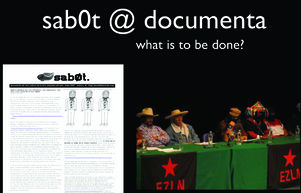
C.S.: If you were online, why and when did you decide to additionally go for a printed edition of your magazine?
F.I.: I found out that it is difficult to communicate with many of the people that I would be interested in having a conversation with, simply because they would not go online – for many different reasons. So, I decided to make that effort and go for a paper issue. When it is economically possible, we go and print an issue. We ask for different funders and friends to give around 50$ each, or whatever is needed for printing, and then ask the people to give whatever cooperation they want.
C.S.: You said sab0t is a project of the server possibleworlds.org. What exactly is this server for?
F.I.: It gives hosting space to 40 different projects, mainly in Mexico, but some of them are also in Germany, Peru, Brazil, Barcelona, or in Costa Rica. The idea is to create a kind of a virtual community space, a common ground which is nourishing to us in many ways.
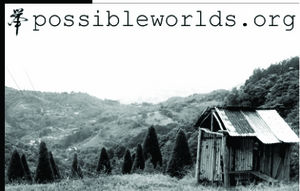
C.S.: But only printed magazines were invited to the documenta magazine project, right?
F.I.: Well, mostly, but a few are also only online, e.g. espera publica from Bogotá in Colombia. They used to have printed magazines in the past years, but no longer do. But as they have about 3000 subscribers for their mailing list e.g. and their web services, they cannot be ignored. They are doing a lot of important work about the public sphere in Colombia.
C.S.: The background of my question is that I was wondering what role digital media and the Internet play for the documenta curators. Do they recognize the potential of the Internet as a medium to organize people, to build "small media" and to develop new activist and artistic strategies, and also new aestehtic experiences, or does the "world’s biggest show of contemporary art" – as they describe themselves – still focuses on pre-digital communication and media. What is your impression about the relation between the printed and the online part in the magazine project?
F.I.: My impression is that so far I still don't own the copies to the printed magazines, mainly because I didn't want to carry all the weight from Kassel to Celle to Berlin to Madrid to Philadeplhia to san Diego and back to Tijuana, even if they would be on my backpack on the airplane. Fact is that everything has been published online and I can read every text that was selected to be printed, plus all the others which were much less mainstream and more interesting for my own practice. So I wouldn't want to carry the weight of so many texts I'm less intrested in. And that don't communicate much to me. I prefer so much more the b-side, even in records. The same thing happened with the exhibition, I was more interested in more off-beat material. Fortunately the network is vast and infinite, and we can have all wonderful connections going through different sides. Like the Tijuana of today which doesn't depend much on the downtown and posher parts, the city it's becoming hyper-communicated through different streets and roads in ways which some years ago wouldn't make any sense at all. Now not every part of the city must connect to the main roads. In this same way, when I learned abou the existence of documenta was because of documenta x, specifically by works such as kein mensch ist illegal bordercamp or the very first cyberfeminist international, which were part of the Hybrid Work Space by Eike Becker and Geert Lovink/Pit Schultz, which I believe back then it was also not very central to documenta itself... anyhow, eventually the book of the documenta magazines project will arrive in my postal address, and by then the online discussion will be somewhere else, and the book will go to the shelf.
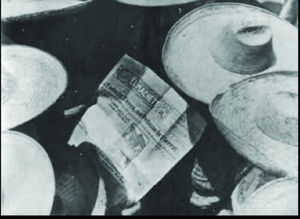
EL MACHETE
C.S.: Do you have an idea what the criteria were for selecting the projects? As many as possible? From as many different countries as possible?
F.I.: I can only guess about it. The guy behind the magazine project, Georg Schöllhammer, is very much aware of both the printed as well as the digital world. But as documenta is a contemporary art thing, this is perhaps why it was more focussed on print.
C.S.: Excuse me, I don't understand this explanation. Why is art automatically more related to print?
F.I.: Of course, it's not, but this is how institutions traditionally think.
C.S.: Has there been any discussion about it?
F.I.: In the beginning, yes. And they were also looking for mailing lists. But where we ended up, the »paper & pixel« section, is this kind of hybrid space: publications working with digital culture on and offline, and contemporary art publications working online. And sab0t is more of a zine, very cheaply produced, in contrast to most of the other more glossy magazines. It can be distributed online as a .pdf or printed as a cheap black and white publication .
C.S.: Now, let’s talk about the event in Kassel. What did you do there, and what were your experiences?
F.I.: For me, it was part of a long process, because I actually met Georg in 2002 in Sevilla at Post-Media Publishing which was an event organized by Andreas Broeckman at the Universidad Internacional de Andalucía. It was about digital magazines which had decided to also produce printed issues. As I have been involved in a number of projects, e.g. Sputnik, Undo, Cinematik and others, I was invited there. The idea back then was to create a kind of platform to exchange texts between these different magazines which mainly were Western and Eastern European, but it turned out to be very difficult to exchange texts, because of language reasons, because of economical reasons, but mainly because of the different contexts. I think Georg's project is addressing this fact and trying to introduce traditional art magazines more than digital magazines into this dialogue. For example, there has been an introduction to alternative licensing models, like copyleft.
C.S.: Where did that happen?
F.I.: At the platform: http://editors.documenta.de. So, basically, we were invited to exchange texts between each other, imaging to have, for instance, a Mexican text in a Chinese magazine. I don't know how much of this has become a success.
C.S.: And what was your concrete experience?
F.I.: sab0t has been invited by the Brazilian magazine canal contemporaneo to exchange texts, and also by Ramona – an Argentinean magazine. But this may vary from magazine to magazine, of course. Maybe we have weird texts which do not make any sense for other contexts, like mainstream magazines?
C.S.: What else was going on – besides the possibility of finding exchange partners for cross-publishing?
F.I.: There was a couple of panels and internal workshops on topics like "the art of blogging" etc. And there were fierce discussions between those who are in favor of blogging and others who are against it. There were also other discussions, about translation, which is always an important issue, and of course the most interesting things are those which happen at the side, the conspirations, the informal exchange between the magazines which are already collaborating on a more effective level. And, of course, for the people who were invited to Kassel, it was a chance to see the exhibition.
C.S.: Are you happy that you came the long way from Mexico? What are you taking back? What does it mean to you that you participated?
F.I.: I was really happy to be here, to have the chance to have a dialogue with the documenta, because this means being able to escape the usual state structures in Mexico. And, among other things, I had the opportunity to talk to José Carlos Mariategui, a Peruvian researcher, who has some relation to Casa José Carlos Mariategui (his grandfather was a seminal 20th century Latin American revolutionary who still turns heads around), and we discussed the possibility of his inviting me for a residency so that I could do research and write about the Zapatista internet practices, which is something that has been mystified a lot. Then I had a good exchange with the Colombians. Also to see this documenta thing and try to understand why it is so big. I saw a couple of pieces that made me think a lot: an Argentinean piece called Tucumán Arde about some artists from the 1960s and 1970s who were trying to show the situation in a remote, rural region of their country which had a major crisis, and how they were fighting the institutions then, 30 years ago. And I also enjoyed a Brazilian piece a lot, I forgot the name of the author but it was some people interviewing more people on the streets, and of course, "9 Scripts from a Nation at War" in the documenta-Halle about the Afghanistan processes in the US ...
C.S.: What does it mean to your local work that you have been here. Will anything be different when you get back?
F.I.: No, I guess it will be the same. I mean, at a certain point, when I first received the invitation by documenta, I talked to the director of a state institution, who then agreed to fund three issues of our sab0t magazine (we are talking about $1,200 here). But when they started to notice that we were not willing to publish their press releases and other stuff they’d suggested, they decided to not give us the money.
C.S.: What kind of institution was it? A museum?
F.I.: It was a very important digital art institution. For me this was helpful to get to know better the state of the current situation. It is very difficult to have an dialogue with institutions in Mexico.
C.S.: How did you experience your role in Kassel, the role you play within documenta? Do you have the impression, that your work is taken seriously there? Did you get serious support? Were you treated well?
F.I.: Well, during this week, I was taken as serious as any other editors who were there. The magazine projects had a space where the magazines were glued (!) on the table, about a hundred magazines, ... people could browse them, and get to know what was going on in other countries. It was definitely too much information for a passer-by, but it was great to be there. But the documenta boss did not show up, neither did his wife. Probably, I was an exotic guest inside documenta, but I don't have anything against being exotic, even in Mexico City I am exotic: being from Tijuana, I speak a different accent than the people in Mexico City. For me it is less offensive to be exotic than to be a person who thinks of a person from another culture as being exotic.
C.S.: Did documenta support your travel?
F.I.: Yes, the travel, and everything else. And I hope I was not like a pest to them.
C.S.: What is the role of documenta for artists and activists, for the people you are working with in Mexico?
F.I.: Most people I am working with or who are working within possible worlds do not know what documenta is. They say, "Ah, Kassel! But where is Kassel? Sorry for my ignorance. Oh, it’s Germany, great, let’s do it!" But there is some others also who know what documenta is, and it certainly plays a major role in the art world of Mexico. Everybody wants to be there. For example, there was a piece in front of Orangerie, in which a collective from Mexico, Laboratorio Curatorial 060, collaborated in the work of another artist—we are working with them in Mexico, they were also here.
C.S.: So they were officially invited artists?
F.I.: Oh, no, they were invited by some artists to intervene in their work. Do you know what I mean?
C.S.: No.
F.I.: In the exhibition there was an artist who decided to invite collectives from the whole world to intervene in his piece. Like what happened in documenta X with "hybrid space," but differently: here many artists and collectives collaborated on the piece of one artist.
C.S.: Ah! I was not aware of this at all. Who is that artist?
F.I.: Ricardo Basbaum.
Well, yeah, Mexico and documenta: they love it! Maybe this year they'll hate it ....
C.S.: ... because you were here.
F.I.: I am not that important. But many official artists who had expected or hoped to be invited were not here. There is this tendency among people in Mexico to undermine things when they are not included. For example, when ARCO , the Spanish contemporary art fair, decided to invite Mexico as the official guest, hundreds of people travelled to Spain–and I was not one of them. But the newspapers in Spain would quote me as one of the Mexicans . For me that was really offensive, because I am not one of the 700, or 300, or 100 official artists in Mexico. For me it is an offense to be a Mexican in this context. Or, when Mexico was invited to Haus der Kulturen der Welt in 2001 or 2002, I was also not invited. Although the topic was "borders"–something that I have worked on a lot, but from a very critical perspective. So the battle line, or the positions, are very clear. We have the same passports. But that’s it. I have never received any grants or any support from the Mexican embassy to travel or anything.
C.S.: You seem to be very aware of power structures in your society, but also especially within the art world; you define or position yourself working "outside" institutions. Did you also reflect on what documenta actually is—in terms of power relations in the (Western, hegemonic) art world. It is probably the most powerful institution in this whole system. Did you reflect on this, or did you just enjoy being part of it?
F.I.: I have to admit, I enjoyed it a lot. Yes, why not. You get a chance to travel, and I wanted to use the opportunity. It may look like a contradiction in a contradictory world. It is important to not become bitter and frustrated.
C.S.: Don’t get me wrong. I would never say one should not go there, or not use the opportunity. But I have the impression that in your context in Mexico the field is very defined and clear, and I see that with going to documenta you leave this field, escape also its clear definitions, you go somewhere else and maybe even get another identity and have more options.
F.I.: It’s very funny, I would say, because in 2005 I applied for a grant for young artists in Mexico. I had only applied once before, but I was told by the jury that I should not apply again, because my work was not art but something else, probably communications. One day before the winners were going to be published there was press conference where it was explained what decisions have been made and why. For me it was a kind of lose-lose situation. If I didn't apply, I would not get it, and if I applied, I would also not get it. The artists who got it in the end were those who were very close to the jury, students of one of the jury members. In a country with 32 states, this is ridiculous. But the funny thing was, when I re-applied in 2006, I got it.
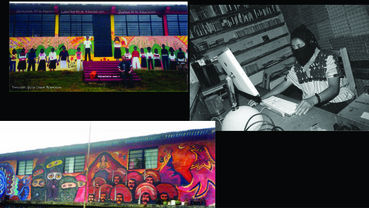
This also might be regarded as a contradiction, to declare myself part of the "other campaign" of the Zapatistas and apply for a grant. But I am also a Mexican, I pay taxes etc. So why not trying to get something out of it? I am against the system, but still, it is public money that we are talking about. Would it be the same if I was a Catholic or a Jew or black or indigenous? Would they tell me not to apply? I don't think so. In an ideal world, the state should represent and support us all, not just a small elite. And the state could learn a lot form the questions artists are asking. Regarding documenta, it is the case that I am giving the officials problems because of my mere existence. They would be happy if I retreated to a rural community, and just drink water and eat rice, and leave them alone. But, no, I won’t. I am afraid we have to coexist.
C.S.: Maybe one difficulty of discussing the relationship between art and politics comes from the fact that the two fields cannot clearly be separated. Many aspects of the one are part of the other.
F.I.: Definitely. In 2005 there was a big digital art festival in Mexico called Transitio, and people coming from Europe, Latin-America, Asia were complaining because they experienced the festival as very clean. They were wondering what was going on in Mexico. But they were inside this big bubble, the National Center of the Arts, and then we came and met with these documenta people (in the previous week), and other people came in from outside, and they were happy to find out that something else exists.
For example, everyone in the institutions uses French theory as a very repressive theory to explain why things are the way they are. They use Deleuze and Guattari and Foucault to reaffirm power structures. It was very symptomatic to have this Brazilian woman, Suely Rolnik who wrote a book together with... Guattari, I think. And she was looking for real people related to anti-globalization issues and so on.
C.S.: And?
F.I.: Because she was very much into Marxist theory, and that’s is why everybody was trying to devalue what she was saying or writing.
C.S.: Before, you said one sentence, which seems to be very central for me. You said, that the idea of your magazine is to bring art and culture to the movement and not the other way round, to bring political activism into the art spaces. Do you have any explicit experiences with that bringing activism to the art world?
F.I.: I don’t think that it is necessarily wrong to do so, but it is very difficult to establish a common ground. For example, people in the institutions would tell me to bring my Zapatista mask to talks, wear it, for example... I mean, they need to show they are inclusive, which of course they are not.
C.S.: Ricardo Dominguez did that for many years, wearing the Zaptista mask at art events ...
F.I.: Yes, but he did in the US. Here, I mean, in Mexico, I can’t do it, because the Zapatistas gave up the dialogue with the government in 1994, because the government did not keep the promises they had made before. So, I can’t simply wear the mask in the art context. That would mean to mix things which should better be separated.
This year, for example, we were invited to participate in the second edition of the same festival. First I was invited as a candidate for the post of director, then they said I would not have the necessary credentials to do the job. Then, they invited me as a curator, which was fantastic because the topic was "borders and communities." But when they found out what I wanted to do, they told me they did not want to get involved in politics, but rather politics in more poetic ways, and finally they invited me as an artist, but they still refused adequate payment. So we are still in the middle of negotiations. We at least want to keep the hardware we use in the exhibiton, because otherwise we would be totally exploited there. It's there that we are exotic, and we would be used as part of their justification mechanisms in order to demonstrate democracy to the outside world. We know we are getting used there, but OK, it does not matter so long as we get certain things there, e.g. a satellite modem, digital projectors, computers.
C.S.: You want to make a deal with them.
F.I.: Yes, we are asking to establish a kind of a work-station in a closed space with one entrance only, and if you want to get in, you have to sign a petition, including your passport number. The petition is a complaint about the classist art system, about the failure of the dialogue with the Zapatistas, about the presidential election fraud, and it includes the demand for the immediate release of all political prisoners. The petition will be signed by the actual people who come to the exhibition. Probably the director of the place is not going to sign it. Nor ambassadors or important figures. So this is our way of participating in the exhibition. What we are stating is that we are there, in the exhibition, but at the same time, what we are doing can only be seen by the people who sign this petition. And the people who don’t sign it will not be able to see what we are doing–which is good. Amongst other things, we are planning an alternative symposium there with people who do pirate radio, net art etc.
C.S.: Net art?
F.I.: Net art is also part of the official game here. Mostly it's art for embassies, because it is an easy way to make people from other countries believe that Mexico is an advanced country, it is cutting-edge, and thus a good place to investment... So, yes, we want to be uncomfortable, but so far, our participation has not been confirmed...
C.S.: Now, I think it is time to talk about the Zapatistas, about certain political and economic strategies they are following. And as part of this, I would like to know more about the role aesthetics play within these strategies. What would you describe as central ideas to the Zapatista politics, or policies?
F.I.: Well, the main one is "dignity." For 500 years or longer, the indigenous people have been marginalized from everyday life. The only role they had was to do badly paid jobs like cleaners, farm workers etc. And only few years ago, in Chiapas, the indigenous people could not even use a sidewalk; they had to walk on the streets. And I think for Mexican society, they very much represented as the "other."
Basically, they were not seen, they were invisible, until they put their mask on–this ski mask.

So by the act of becoming invisible, they became visible. This is something possibleworlds.org has also been doing, in a different way. We closed the access and people needed a password to get in. You have to subscribe which costs $3 a month at the moment. Some people working in institutions were very much offended by this, arguing this is an era of free culture, open space, public sphere etc. For them it is easy to say so, because they are state-funded, get their salaries, and run a big machinery, while we have to find our own way to stay sustainable. For many years, I did not have enough money to eat more than once a day. So, we decided to create a very fragile economy which would allow us to know what we can do and cannot do. We went back from the digital to a kind of agricultural level; you do what you do, that’s it. Maybe you harvest something in one year; you talk one-to-one with people, also because the global network is so complicated, everything is going so fast. For an individual like me, it would be really easy to immerse myself, for example, in the Berlin or Madrid scene... but this would benefit nobody, OK, me, but that is not the point of all this. When we started possibleworlds.org we decided to center on Mexico, and from there try to communicate with others, other collectives. And this has been very successful so far, slow, yes, but successful.
C.S.: What other strategies could you mention?
F.I.: Well, the forced labour strategy. One of the main cultures inside the zapatistas, the tzoltziles are very much oriented towards hard work; they even work on holidays etc., and partying is valued much less than work. And we feel very close to them. What else? There is also a lot of 'humility'.
C.S.: Part of the Zapatista policies is to build 'another culture'. What does that look like? Because this is also where you come from, right?
F.I.: We are collaborating with other collectives, other than possibleworlds.org, thinking, and trying to create an alternative television system, an alternative radio system, using different values from those supported by the Mexican state and corporations. We have been working on telenovelas, we are going to open a media space in Tijuana in a couple of months, which will be founded by individual members, working on street graphics, indymedia, printing zines, doing documentary work ... And there will be the Fiction Department, a group dedicated to narrative media research and production. And I guess that's it.
C.S.: So, your main projects are alternative radio and TV projects, as well as public space projects, including the Internet.
F.I.: Exactly, everything to communicate with a non-elitist culture.
C.S.: How is the economy of this work?
F.I.: Precarious. It is an unpaid volunteer-work economy. But this is exactly what we have to do, we have to find a way to make our work sustainable, otherwise, we are going be sick in five years and die young... What we do, is that we only work a couple of hours a day, that is OK.
C.S.: So the idea of "another culture" means being paid and supported by the people, by the community, through a subscription model or micropayments systems, for example?
F.I.: There are different models being used by different collectives. I decided to go for the cooperative, which means I get part of my income through writing etc. but also do other work. Usually, the ones who can give away their work for free have parents who give them money. What many people do is to move back to smaller towns where life is cheaper, and where it is also easier to get in touch with different social groups, e.g. older generations.
I was reading the new book by Alberto Hijar last month, who is somebody I really admire. I would love to get to know him personally, and talk to him about electronic media, because he has been working for 30 years, involved in the whole of Latin-American cinema, and the theater of the oppressed (Augusto Boal); he is very experienced, and he could probably give us good advice. But it is so difficult to bridge the generation gap. Maybe we would seem very naive to him, making all the wrong decisions, yes, maybe that is the case; we should talk about it. And also, I could not afford a university education. I am doing it now, late. I feel like I am doing everything backwards. I don't have money to continue this next semester.
C.S.: Would you say that your work is successful? Do you have the feeling that there is something growing, that has strength and power in your context?
F.I.: At certain moments, yes. But very often it feels like it does not have a lot of power. Simply, because we spend so much energy in creating things which should be there already. For example, there are many unused theater spaces in Mexico, which we could use, but simply do not get the permission to–for many different reasons. So, instead of doing theater in the theater, the drama group Peleles does their theater in the living room. This is a shame. The officials close their eyes and don’t want to see that this is happening, but they also don’t care.
C.S.: And how about yourself?
F.I.: For me this way of working makes me become aware very much of my personal reality, of what I can and I cannot do, where the limits are. My life should not be fighting to belong in a city which historically never has accepted people from other cities in the last 700 years. Even the Aztecs were into that practice. Do I really want to be there (in Mexico City) working as a kind of exotic person, doing unimportant net art, addressing unimportant topics? I don’t think so.
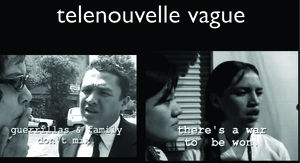
C.S.: What is the heritage of Western culture, of modernity? What does it mean for your work? Is it important?
F.I.: Yes, very much. It took me 19 years to find out that I was Latin-American. Growing up close to the border, I was always exposed to US-American radio and television, and media; at the same time we were much neglected by the Mexicans, being just a poor town far away from Mexico City. So I was reading French and the German literature before I read Latin-American literature. Latin-America looked so outdated to me, but of course, when I started living in the US, going to raves, meeting cyberpunks, meeting Mexican and Latin writers in the US, I found out, that I was completely white trash, Tijuana white trash. And so in a way I finally understood what being Latin-American meant. Years later when I moved back to Mexico, I started to read Latin-American literature and got aware of all this. I started Latin-American studies as a B.A. I still have not finished it because now I want to know everything. I want to know about the revolutions, and the colonial period, and meet all the people from these countries. And this is where I can communicate with Europeans, for instance, because in a strange, hybrid, bastard way, I am mixing all this together. Of course, when I make a TeleNouvelle-Vague, it is Godard in a Mexican low-esthetics way. Like the Border Hack was a kind of offspring of Florian Schneider's Border Camp, then I used to work with a cyberfeminist, Cindy Gabriela Flores, who also is very dedicated to working in Mexico.
C.S.: Do you think that the principles of democracy and the way the art world functions do exclude each other? Is art bound to be elitist? This is a question which not only concerns Mexico, but the whole world. Who has the power to define what art and culture should be? When I look at the documenta exhibition, I wonder how backward-oriented, and even blind to contemporary aesthetical discourse, such an institution can be. And–sorry to say this–it's great that you guys were there, but I am afraid that it is totally on the side and fulfills a more decorative function than anything else. Although I have to admit that the magazine project has a huge potential – the role it plays within documenta, the way it is represented and communicated, is ridiculous.
F.I.: Things are not going on on the highways, but on the side. Maybe you have to take some bad road, go to a small town, to discover something fantastic. For example, in 2003 I was invited to go to Talent Campus at Berlinale, the Berlin film festival, and I was excited to meet people who are ?? cinema from Asia and Africa, but when I got there, what I saw was a representation of the world film industry. There were Mexicans, but from the Mexican institutions, lots from France, lots from the US, lots from the UK and Germany. I felt very disappointed when I saw this. It seems it is all about national representation, while the logics of Internet are about individuals interacting. This is something I like best about the whole nettime scene; you don’t have to pass through the President’s office in order to get to Hamburg.
C.S.: Are you related to the so-called anti-globalization movement in any way? What is your opinion about it? Do you relate to or participate in it?
F.I.: On the one side, I think it is very important to have the G8-counter summit and anti-actions, but on the other side, what I have learned from the Zapatistas is that we should not fight these people, but let them alone, do your own things, develop your own strategies, live your life. You cannot be reactionary the whole time, reacting to the megalomania of some powerful corporations which are of course married to the state. No matter if the Zapatistas are right or not, to seclude yourself, do what you do, not talk to them. And when they are the only ones at the party, they will feel very bad. Of course, they are the ones in power, but if we fight for this power, we are only making them stronger by looking like stupid and savage people–which we are not. We are smart and have great networks. Let them dance alone, parade all over the world like the king without clothing.
C.S.: The title of your newspaper is sab0t and presumably has something to do with the idea of sabotage which is a certain way to "react" to something.
F.I.: Oh, yeah, this has been criticized a lot by collegues with Zapatista affinities. They were asking me why I am still in a dialogue with institutions, why I am staying within the logics of sabotage while it has been proven repeatedly that it does not work. The only thing I can say is, I am Mestizo, I am from the border, I am an artist. My mother was in an artist group in the 1960-70s, this group became very big, but she left to a small town to live her life as a teacher. This is not what I want to do. In a way I think it is mediocre. On the other side, it looks like the right and healthy choice, and is probably the more intelligent thing to do. I feel that I am at a very difficult point. The question is: What to do? Or to speak from tradition: What is to be done?
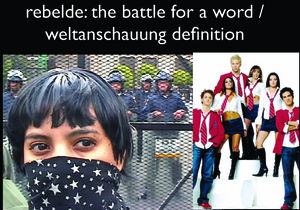
Addendum (by Email):
C.S.: A few days after our conversation, your telenovela »Fea y Rebelde“ (Ugly & Rebel) was censored by Youtube. Do you have any idea why this happened?
F.I.: I'm a little outraged at what happened, I have always been aware of censorship, but I never expected this to happen on the »Fea y rebelde« telenovela. I believe it happened out of pure and crass sheer irresponsible power. Actually there's nothing censorable in the video, no kind of copyright infringement – apart from the 4 second jingle at the intro which as a remix of a shakira song that I find online, but in any case this doesn't belong to SONY music.
C.S.: What exactly was in this part of the telenovela?
F.I.: »Adry la fea« (adry the ugly) is speaking to a her ex-boyfriend on the stairs, about how her acting career is failing. And at the very end the guy tells a real life story of what happened when shakira appeared in a very popular late night televisa show, where he worked in production. So I mean, unless it's illegal to talk about a TV show that millons of persons watched, or to talk about one's job...
C.S.: Do you have an idea who or what the »third party« might be which is behind the censorship?
F.I.: The third party is Televisa, the biggest media conglomerate in latinamerica, along with the Brasilian globomedia. But Televisa is Mexican.
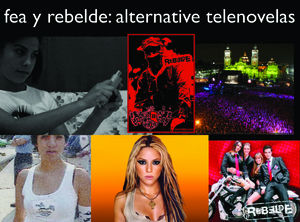
Thanks to Michel Chevalier for proof-reading!




